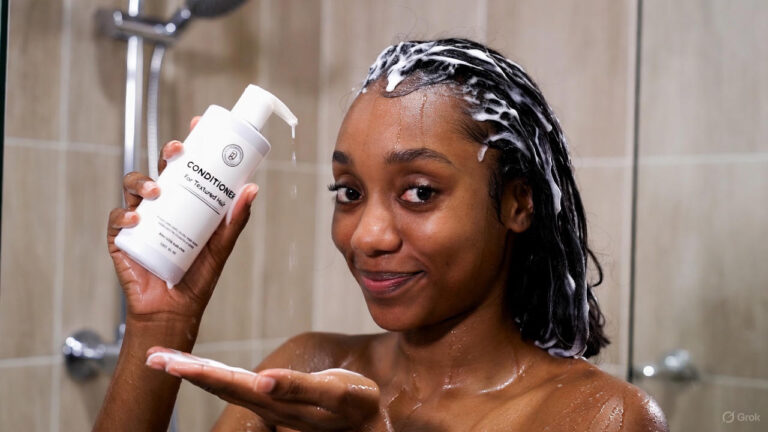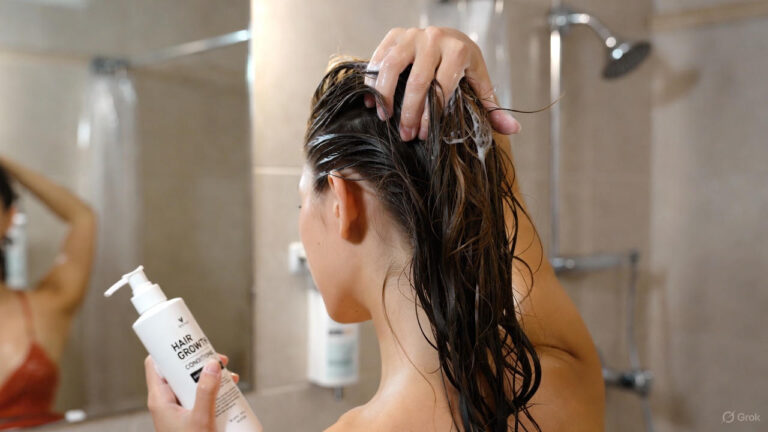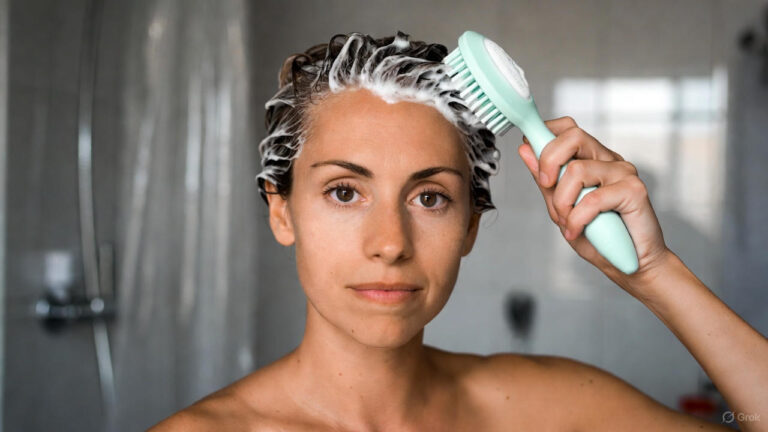Having greasy hair can be frustrating and impact your confidence. The constant battle with oiliness, the flat and limp appearance, and the quick buildup of dirt and residue can leave you feeling less than your best. But fear not!
In this article, we will explore eight effective hacks to stop greasy hair and help you maintain clean and fresh-looking hair.
What is Greasy Hair?
Greasy hair is primarily caused by the overproduction of sebum, an oily substance secreted by the sebaceous glands in our scalp. Various factors, such as hormonal imbalances, genetics, and environmental conditions, can produce excessive sebum. Identifying the symptoms of greasy hair is crucial to address the issue effectively.
Greasy hair tends to have an oily and shiny appearance, lacking volume and body. It often feels flat and limp, making it difficult to style. Also, greasy hair accumulates dirt and residue more quickly, leading to frequent hair washing.
Hack 1: Proper Hair Washing Techniques
The way you wash your hair can significantly impact its oiliness. Finding the right balance between overwashing and underwashing is crucial. Start by determining the frequency of washing that suits your hair type and lifestyle. For most people, washing every other day or every two days is sufficient.
When washing your hair, follow a step-by-step routine that ensures a thorough cleanse. Begin by wetting your hair thoroughly with lukewarm water to open up the cuticles and allow for effective cleaning. Next, apply appropriate shampoo, focusing on the roots and scalp.
Gently massage the scalp with your fingertips to stimulate blood circulation and remove excess sebum. Rinse your hair thoroughly to ensure no shampoo residue is left behind. Finally, the condition only the ends of your hair to avoid weighing it down with unnecessary moisture.
Hack 2: Adjusting Washing Temperature
The water temperature you use to wash your hair can impact sebum production. Hot water can strip natural oils away from your scalp, increasing sebum production to compensate for the dryness.
On the other hand, cold water can help to seal the cuticles, making your hair appear smoother and reducing oiliness. Therefore, opt for lukewarm water to maintain a healthy balance when washing your hair. As you finish rinsing your hair, consider giving it a final rinse with cool water. This will help seal the cuticles and prevent excess oil from accumulating on your scalp.
Hack 3: Scalp Exfoliation
Scalp exfoliation is a game-changer when it comes to combating greasy hair. It helps remove dead skin cells, excess sebum, and product buildup from your scalp, allowing your hair to breathe and promoting a healthier environment.
There are two main methods for scalp exfoliation: mechanical and chemical. Mechanical exfoliation involves using scalp brushes or scrubs to massage your scalp and remove impurities gently. Look for brushes with soft bristles to avoid irritating your scalp.
Chemical exfoliation, on the other hand, involves using specialized scalp products that contain exfoliating ingredients such as salicylic acid or fruit enzymes. These products help dissolve excess oil and debris, providing a deep cleanse for your scalp.
When exfoliating, it’s important to strike a balance. Overdoing it can lead to dryness and irritation, so aim to exfoliate your scalp once or twice a week.
Hack 4: Choosing the Right Hair Products
Using the wrong hair products can exacerbate greasiness, so choosing wisely is crucial. Avoid heavy and moisturizing formulas that can weigh down your hair and contribute to oil buildup. Instead, opt for lightweight and oil-free products specifically designed for oily or greasy hair.
Look for shampoos and conditioners labeled as “clarifying” or “oil-balancing” to cleanse and control oil production effectively. These products are formulated to remove excess oil without stripping away the essential moisture your hair needs.
Additionally, consider using styling products designed to combat greasiness, such as volumizing sprays or texturizing powders. These products can add volume and texture to your hair while absorbing excess oil.
Hack 5: Dry Shampoo and Hair Powders
Dry shampoo is a lifesaver when it comes to managing greasy hair between washes. It works by absorbing excess oil from your scalp, giving your hair a fresh and clean appearance.
To use dry shampoo effectively, start by sectioning your hair and spraying the product onto the roots. Allow it to sit for a few minutes to absorb the oil, then use your fingertips or a brush to distribute and blend the product.
Remember to focus on the roots and avoid applying too much to prevent buildup. Hair powders can reduce greasiness if you prefer a natural alternative. They work similarly to dry shampoo by absorbing oil and adding volume to your hair. Simply sprinkle a small amount of hair powder onto your roots, then massage and brush it through.
Hack 6: Proper Hair Drying Techniques
The way you dry your hair can impact its oiliness. Excessive heat and over-drying can strip away natural oils, causing your scalp to produce more sebum to compensate. To prevent greasiness, consider air-drying your hair whenever possible. If you need to use a blow dryer, set it to a low heat setting to minimize damage and oil production.
Additionally, avoid direct heat on your scalp and focus on drying the lengths and ends of your hair first. This will help prevent excessive heat exposure to your scalp, reducing oil production.
Hack 7: Hairstyles and Updos
Certain hairstyles can minimize contact between your hair and skin, helping to prevent the transfer of oils. Consider opting for updos or hairstyles that keep your hair away from your face and scalp.
Ponytails, buns, braids, and top knots are great options for keeping your hair off your forehead and neck, reducing the chances of oil buildup. Using hair accessories like headbands or scarves can also help prevent hair from touching your face and absorbing oils from your skin.
Hack 8: Dietary and Lifestyle Changes
Believe it or not, your diet and lifestyle can play a role in the oiliness of your hair. A balanced diet rich in vitamins, minerals, and antioxidants can promote scalp health. Incorporate foods like leafy greens, fruits, lean proteins, and omega-3 fatty acids, which can help regulate oil production.
Additionally, stay hydrated and limit your intake of greasy and fried foods, which can contribute to excess oiliness. Moreover, a healthy lifestyle with regular exercise, stress management, and sufficient sleep can help balance hormone levels and reduce oil production.
Conclusion
Greasy hair can be a frustrating and confidence-dampening issue, but with the right hacks, you can regain control and maintain fresh, non-greasy hair.
By following proper hair washing techniques, adjusting washing temperature, incorporating scalp exfoliation, choosing the right hair products, utilizing dry shampoo and hair powders, adopting proper hair drying techniques, opting for suitable hairstyles and updos, and making dietary and lifestyle changes, you can effectively combat greasiness and achieve the clean, healthy hair you desire.
Remember, everyone’s hair is unique, so it may take some trial and error to find the perfect combination of hacks that work for you. Be patient and consistent in implementing these tips, and you will start to notice a significant improvement in the greasiness of your hair.
FAQs
1. Can I wash my hair every day to prevent greasiness?
Washing your hair every day can strip away the natural oils, leading to increased sebum production. It’s best to find a balance and wash your hair every other day or every two days, depending on your hair type and lifestyle.
2. How long does it take for these hacks to show results?
The time it takes to see results may vary from person to person. However, with the consistent implementation of these hacks, you should start noticing improvements in the greasiness of your hair within a few weeks.
3. Can using too much dry shampoo cause damage to my hair?
Using excessive amounts of dry shampoo can lead to product buildup, which can weigh down your hair and affect its appearance. It’s important to use dry shampoo in moderation and follow the instructions on the product for best results.
4. Are there any specific foods I should include in my diet to prevent greasy hair?
A balanced diet rich in leafy greens, fruits, lean proteins, and omega-3 fatty acids can promote scalp health and regulate oil production. Incorporate these nutrient-rich foods into your meals to support healthier hair.
5. Will scalp exfoliation make my hair dry?
When done correctly and in moderation, scalp exfoliation should not make your hair dry. However, it’s important to strike a balance and not overdo it, as excessive exfoliation can lead to dryness and irritation. Follow the recommended frequency and use gentle exfoliating products or techniques.



